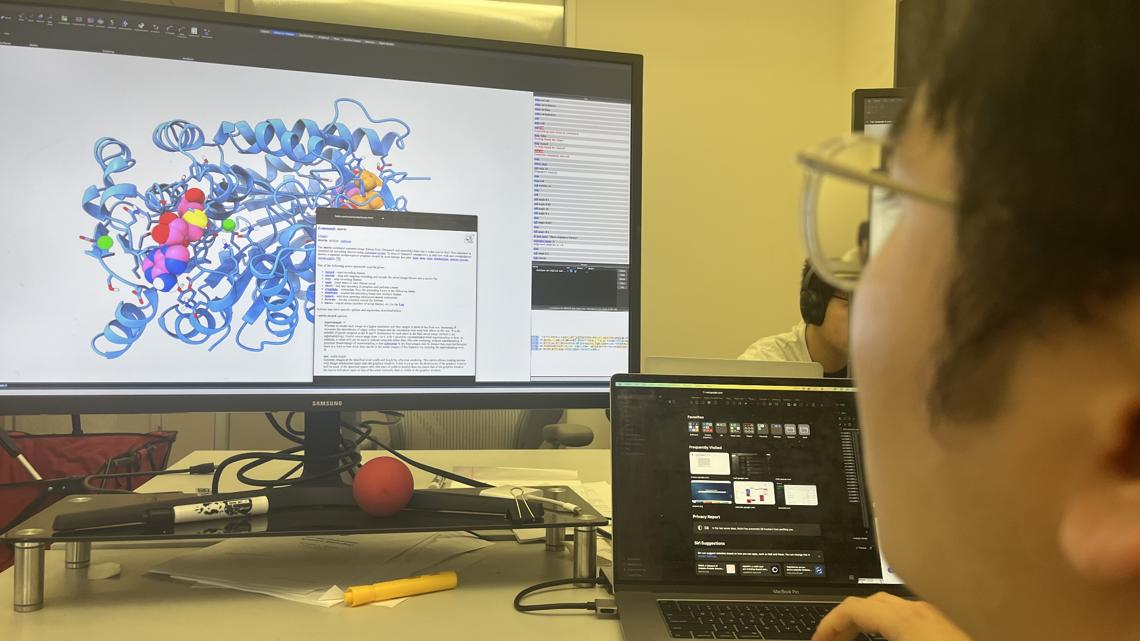How UT researchers are using AI to create an Alzheimer's drug
Researchers say once the process becomes more widely adopted, they can create other medications for the heart and cancer. Researchers at the University of Texas are using AI to speed up the production of medicine used to treat Alzheimer’s disease, using it to identify which proteins are good to use or avoid. Daniel Diaz, a postgrad Ph.D. student who now leads the Deep Proteins group for the Institute for Foundations of Machine Learning, said that once the process becomes more widely adopted, they could create other medications for the heart and cancer. To make a pound of the medication, Diaz said they have to use 333 daffodils, which currently costs $23,000 per pound and the prescription costs $80. However, this could potentially reduce the cost of the drug significantly. Despite this, Diaz acknowledged that AI still needs human assistance.

Pubblicato : un anno fa di Jessica Cha in Health Tech
Researchers say once the process becomes more widely adopted, they can create other medications for the heart and cancer.
Example video title will go here for this video
Example video title will go here for this video
Now, researchers at the University of Texas are using it to help speed up the production of medicine used to treat Alzheimer’s disease.
“AI will drastically accelerate our shots on goals and help us get things over the fence,” said Daniel Diaz., a UT postgrad Ph.D. student who now leads the Deep Proteins group for the Institute for Foundations of Machine Learning.
Diaz said to make a pound of the medication, they have to use 333 daffodils. The active ingredient costs $23,000 per pound, and the prescription costs $80 right now.
“So right now, even though that drug is a generic drug, it costs a lot of money to go get it at your local Walgreens or CVS pharmacy," Diaz said. "But what if you could instead brew it here? Right here in Texas."
To do that, Diaz says they have to recreate the daffodils' genes, or the proteins in it, that make the drug.
“The total possible mutations you can make in a protein, it's like more than the number of stars in the world," Diaz said. "How do you pick which ones to begin with?"
According to Diaz, the AI software called AlphaFold helps identify which proteins are good to use or to avoid. At the same time, they used bio-sensor technology, created by an author of the study Simon d’Oelsnitz, to see if the protein would work.
Diaz said without AI, the work usually takes months to years to figure out. But he said they have no idea what the genetic material or DNA of the protein looked like. He said by using the AI, they were able to recreate 95% of the protein structure in three to five months.
However, Diaz said AI isn’t perfect and still needs human help. Even though they uncovered 95% of the structure, it wasn’t perfect. Wan Tae Kim, a UT structural biologist graduate student, helped figure that out. Kim said he had been working on the project for five years.
“There was, like a 5%, discrepancy," Kim said. "Actually, that discrepancy was very critical for predicting how the drug is binding into the enzyme. AI is very helpful ... But it still cannot cover all parts of structural biology. “
Diaz said AI is evolving so fast that they also use two other AI systems that can add ingredients and vitamins to the protein, and show how to build the protein in real life. It's not only supposed to make the process cheaper and faster, but it could also eliminate the need to use daffodils.
“Whenever you're dependent on nature, you have to wait for things to be in season," Diaz said. "You're also limited by what nature gives you ... You can bring the price of the drug down significantly, rather than having the price be dictated by the supply of daffodils.”
Temi: AI
